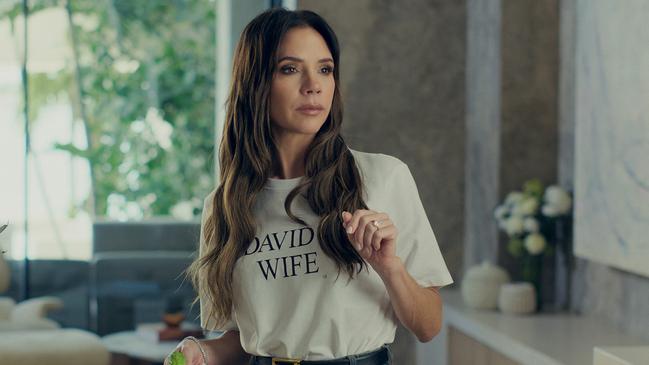The Super Bowl factor: when ads are more popular than the game
Advertising during the Super Bowl has become a monumental marketing moment for brands. This year, new research estimated 73 per cent of people who plan to watch the came intend to watch the commercials.

New research from the World Advertising Research Centre estimates 73 per cent of people who plan to watch the Super Bowl LVIII intend to watch the commercials, as the US sporting event continues its rising influence as one of the world’s most watched and famous advertising moments of the year.
The data comes amid a surge in global spending on sports media rights, up 18 per cent from before the Covid-19 pandemic to reach $US60.9bn ($93.7bn) in 2024, according to research from sports analytics company SportsBusiness.
While that number is not enough to counter the declines in linear TV advertising spend at a global level, the report says, the boost is being driven by major sporting events peppered throughout 2024, including the upcoming Olympics and Paralympics to be held in Paris.
With more than 73 per cent of eyeballs on the Super Bowl’s adverts this year, the content of the multimillion-dollar placements is in the spotlight. The marketing opportunity for brands has become so monumental that many advertisers commonly release “teasers” and adverts in full ahead of the game to maximise exposure before, during and after the increasingly global sporting experience.
Uber was among the first to share a glimpse of its star-studded spot, ahead of releasing the full-length clip last week. The teaser alone, featuring Victoria and David Beckham, was enough to galvanise audiences and generate news headlines the world over.
Uber North America’s head of marketing Georgie Jeffreys said: “The Super Bowl is a fiercely competitive stage with the best brands from all over the world, and we feel proud to be there. While the main spot is undeniably a reach play for all brands, we’ve also used teaser assets and social first content to build hype and anticipation for our television spots.
“By sparking conversation and truly entertaining viewers, we kickstart the excitement and prime audiences to look out for our spot. We love to play into all the hype and anticipation, and find that doing so definitely pays off in the long run.
Comedy-led creativity has become a cornerstone of Super Bowl advertising, and the 2024 spots have seen this trend continue.
Ms Jeffreys explained the Super Bowl is a “tentpole moment in the US” for Uber’s brand campaigns, but that its biggest marketing investment is still in its app experience.
She said the investment in advertising at the Super Bowl is worth it for the brand.
“We evaluate the investment every year all the way through, and given we’re back in a fourth consecutive Super Bowl we clearly believe in the immense power of this platform to reach a mass audience and to drive both brand and business outcomes,” she said.
“We evaluate all sorts of metrics, from being the second most talked about brand at the Super Bowl last year on X, to downloads of our membership program.”
In addition to the Beckham duo, the full-length advertisement brought together a cast of talent including Jennifer Aniston, David Schwimmer and Usher, who will perform at the halftime show.
The idea behind the ad was to remind audiences that you can order “almost anything” via the Uber Eats app, such as flowers, office supplies and groceries. It is
communicated in a comedic style that has become a hallmark of Uber’s TV adverts, which come through creative agency Special Group and its teams in the US and Australia.
In order to remind audiences that Uber Eats delivers items other than takeaway food, customers have to forget something else, the ad purports. So, Jennifer Aniston forgets she knows David Schwimmer, who she starred alongside in the decade-long TV series Friends. The Beckhams forget the name of the Spice Girls; “Remember when you used to be a Pepper Lady?” David queried, holding a jar of pepper (a reference to the kind of items that can be ordered via the app). Usher also forgets he will take centre stage at the halftime show.
Bud Light, the official beer sponsor of the National Football League, also released its advert that marks a continuation of its lighthearted “Easy to Drink, Easy to Enjoy” message. It brought a Bud Light ‘Genie’ to screens, a creative idea reminiscent of a Tim Tams advert that first appeared in the 1990s in which a pre-Hollywood Cate Blanchett appeared. In the commercial, a genie conjured a packet of Tim Tams that never runs out. In the Bud Light commercial, the genie makes American rapper and singer Post Malone magically appear and, among other wishes, ultimately takes Super Bowl fans directly to the game.
Bud Light’s campaign follows a year of controversy that featured a marketing debacle with a transgender influencer on social media, for which the brand received extraordinary backlash that prompted a customer boycott and decline in sales in the US.
Multi-generational humour is at the centre of website building company Squarespace’s 10th Super Bowl campaign, a cinematic ad which is directed by and features Hollywood movie titan Martin Scorsese.
The teaser for the ad features Scorsese and his daughter Francesca, who schools her father on how to build a website about a short movie called Hello Down There, about the possibility of extraterrestrial life. The commercial quips: Are extraterrestrials real if they don’t have a website?
“We started thinking about this year’s creative with a societal insight: we are flooded with so much content today that we are having a hard time discerning what is real versus fake,” Squarespace chief creative officer David Lee said.
“The game-day spot takes this insight to the extreme, where people around the world are so preoccupied by the normal influx of digital content that they miss increasingly bold attempts by extraterrestrials to make contact. It’s only with a beautifully designed Squarespace website that the extraterrestrials finally get the attention of earthlings.”
Mr Lee also said there were very few chances brands had to participate in a pop culture moment where people genuinely want to watch advertising.
“We use this as an opportunity to share what the brand stands for and to communicate a message that will surprise the audience each year with our creativity.”
He added that the creative opportunity for brands had evolved significantly over the past decade.
“We don’t just see this as a single moment, but as part of a larger global marketing moment extending into Q1. The global stage and hype around this event can make or break brands and, if done well, it can create incredible buzz and lasting brand awareness.”
Super Bowl adverts do not only chase mass audience reach; fame remains a powerful objective. However, while there is value in star power, Mr Lee said, the efficacy of the adverts rely more heavily on creative execution.
“Celebrities come with their own audiences and passionate fan bases, and if leveraged authentically brands can tap into their respective existing loyalty base. At Squarespace, authenticity is key so we’re always looking to work with talent that are aligned with our brand and ethos,” he said.
“But I don’t think fame alone can lead to a successful Super Bowl ad. You can have all the fame in the world, but if it’s not leveraged correctly or tied to a narrative with cultural relevance, it’s unlikely that brands will see the impact they want.”







